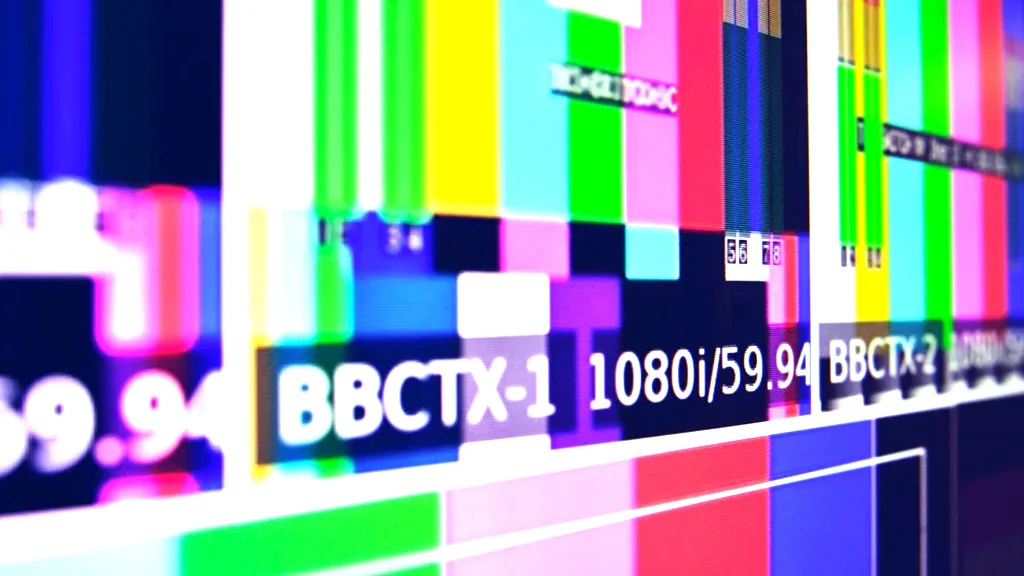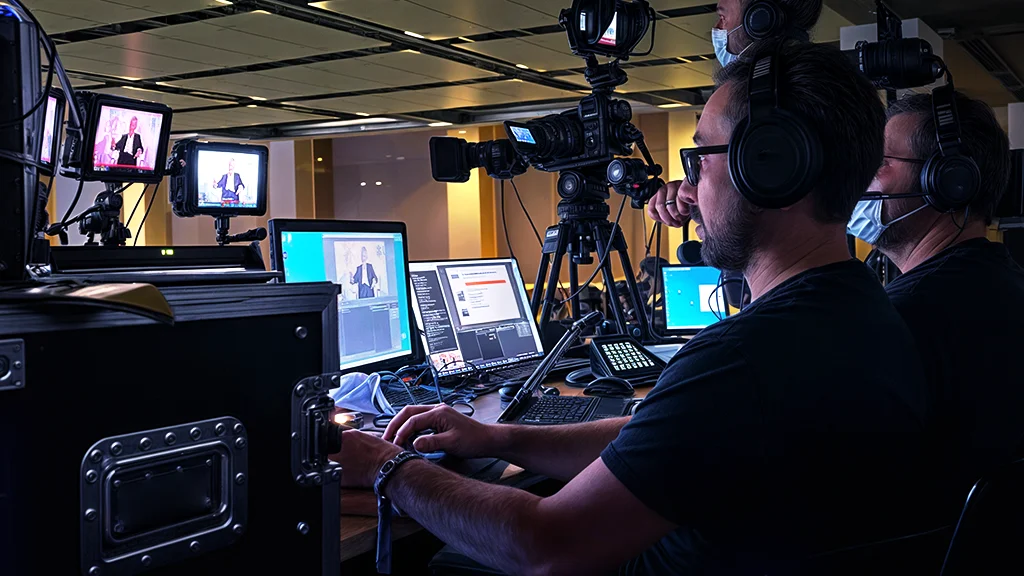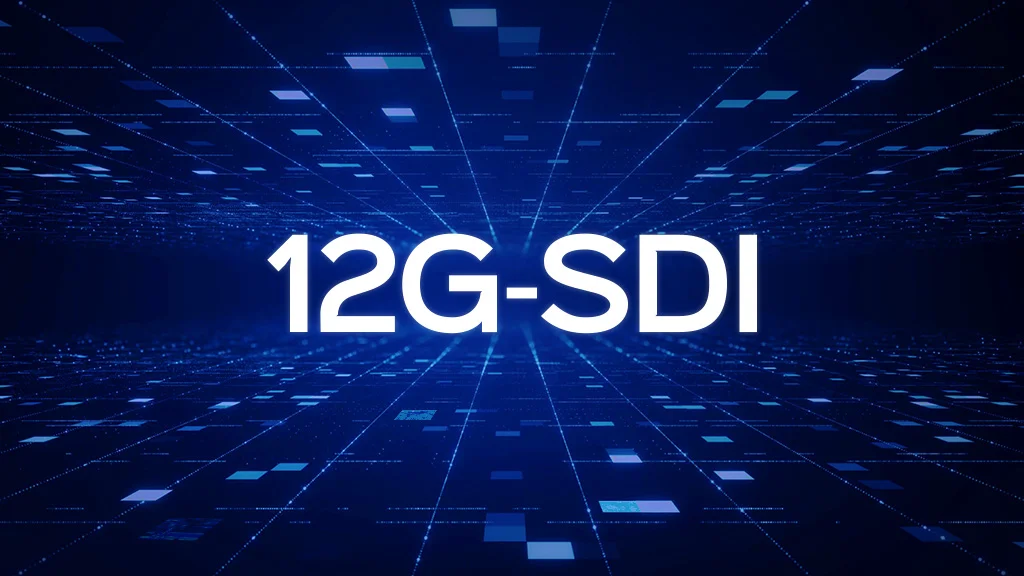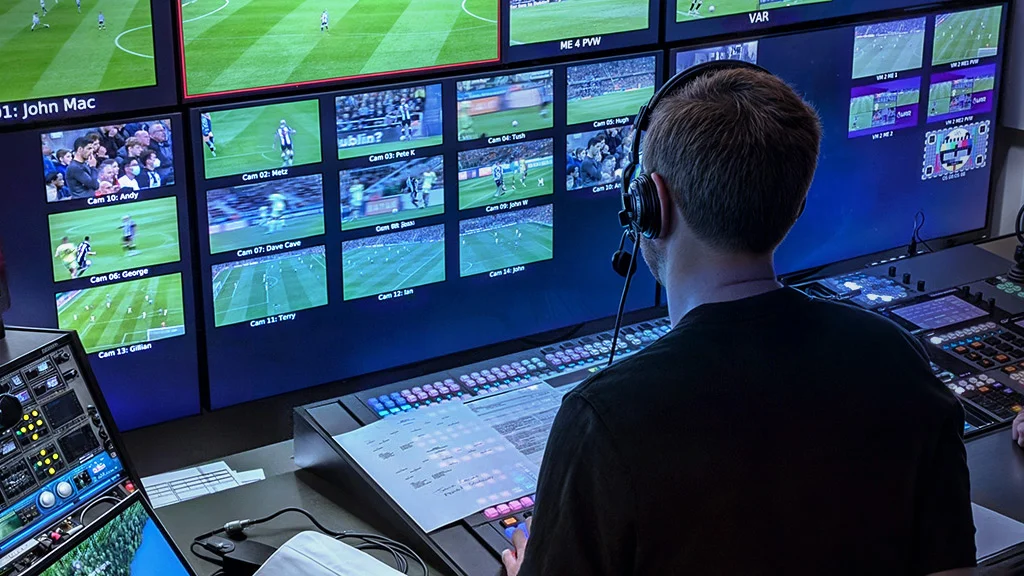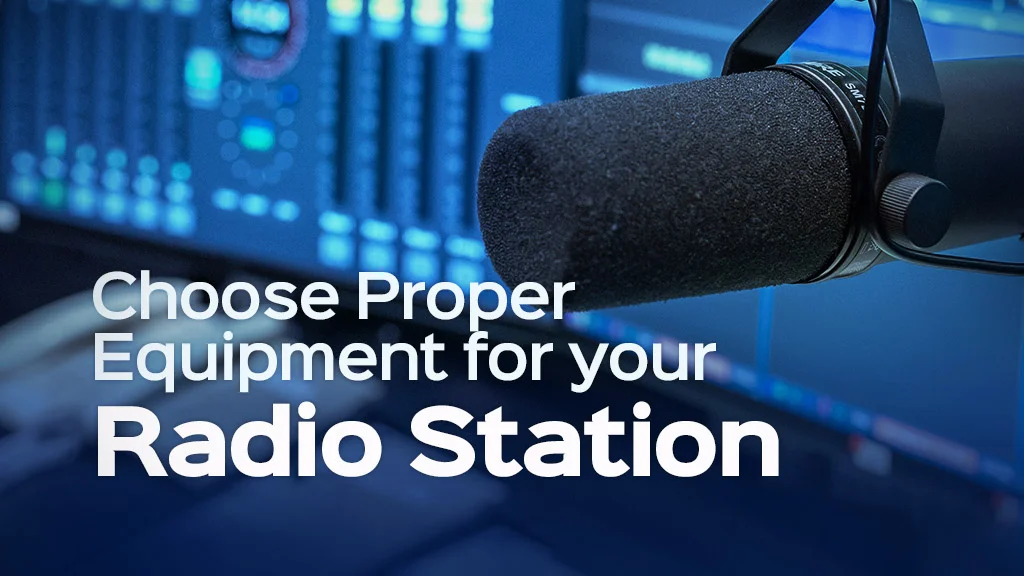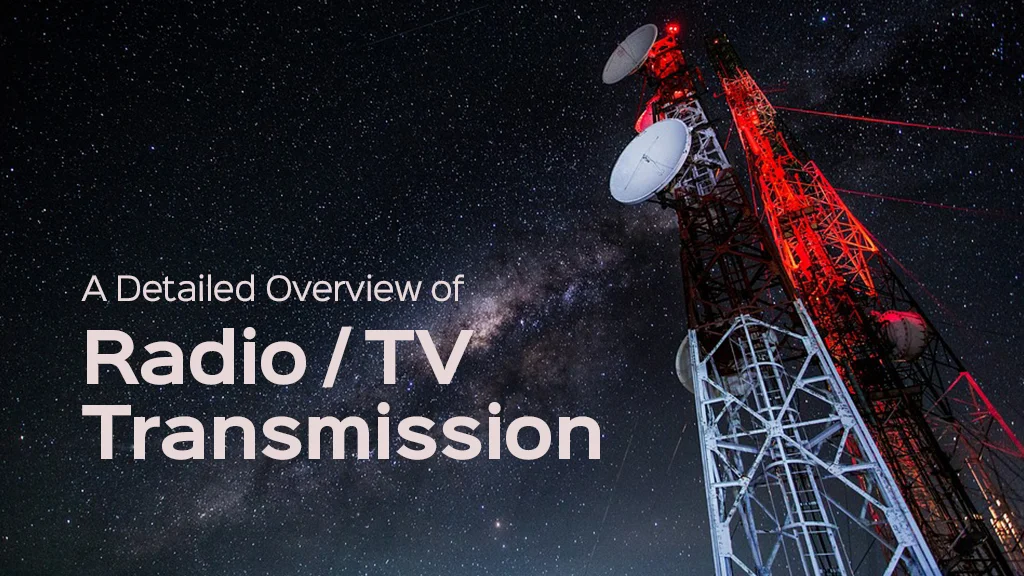
- Academy
A Detailed Overview of TV Transmission Sites
In an era where broadcast media remains a dominant force in information dissemination, understanding the essential equipment for TV transmission sites is crucial. This guide provides a comprehensive overview of the TV transmission chain, the significance of each component, and the key equipment that ensures effective broadcasting. From signal generation at the production stage to the delivery of content to viewers, each phase of the transmission chain plays a vital role in maintaining quality and reliability in television broadcasting.
Importance of the TV transmission chain
The TV transmission chain is integral to the overall success of broadcasting operations. Its importance can be summarized in several key areas:
Signal Integrity
Maintaining the fidelity of audio and visual signals throughout the TV transmission chain is critical. Any degradation in quality due to poor equipment or inadequate processes can lead to a negative viewer experience. Signal integrity encompasses various attributes, including:
Clarity: Ensuring that the video signal maintains its resolution and detail.
Continuity: Preventing interruptions or drops in signal that can occur during transmission.
Noise Reduction: Minimizing unwanted background noise in audio signals and artefacts in video quality.
Quality of Service
Quality of Service (QoS) refers to the overall performance of a broadcast system, which includes:
Reliability: Ensuring consistent performance under various operational conditions.
Latency: Minimizing delay in the transmission process, which is essential for live broadcasts.
Error Rates: Reducing errors during transmission, which can affect viewer satisfaction.
Coverage and Reach
The effectiveness of the TV transmission chain directly correlates with its geographical coverage. This involves:
Signal Distribution: The strength and reach of the transmitters that allow stations to broadcast over vast distances.
Multi-platform Broadcasting: Adapting broadcasts for multiple platforms (satellite, cable, or internet) ensures that more viewers can access content seamlessly.
Technological Advancements
The television broadcasting industry is constantly evolving, and staying abreast of technological advancements is crucial. This includes:
High-definition (HD) and Ultra-high-definition (UHD): Increasingly adopted standards for video quality.
IP-based Transmission: Leveraging internet protocols for broadcasting, allowing greater flexibility and improved resource usage.
Regulatory Compliance
TV broadcasting is subject to various regulations and standards. A reliable transmission chain helps ensure compliance with:
Broadcast Standards: Adhering to national and international guidelines that regulate content and technical broadcast quality.
Licensing Requirements: Operating within legal frameworks that govern broadcasting licensing.
TV Transmission Chain Explained
The TV transmission chain consists of several key components that work together to facilitate the broadcasting process. It can be broken down into the following stages:
Production and Processing
In this initial stage, content is created, including scriptwriting, filming, and editing. This phase usually occurs in a studio environment equipped with cameras, microphones, and lighting. After production, the content is processed to enhance quality. This includes video editing, encoding, and potentially applying graphics and effects.
Broadcasting
The broadcasting stage is a critical phase in the TV transmission chain, is responsible for delivering processed content to airwaves or digital platforms. This phase involves various processes that ensure seamless presentation of audio-visual material to viewers.
During broadcasting, operators utilize advanced Control Room solutions to manage live or pre-recorded content scheduled for transmission. This includes integrating different video and audio sources, ensuring smooth transitions, and ensuring the final output meets quality standards.
Transmission
Once Broadcasted, the content is transmitted through various means. This can include satellite, cable, or terrestrial means, using different frequencies and modulations depending on the technology used.
Reception
At the viewer’s end, set-top boxes, antennas, or smart TVs receive the transmitted signals, which are then decoded and presented as watchable content.
Monitoring
Throughout the chain, there are systems in place to monitor quality and performance, allowing for real-time adjustments and ensuring compliance with broadcasting standards.
Equipment in the TV Transmission Chain
Each segment of the TV transmission chain requires a variety of specialized equipment. Below are some examples of essential equipment for each stage of the chain:
Production and Processing Equipment
Cameras: Cameras are one of the most critical components in the video production cycle, positioned at the beginning of the process. They play an essential role in capturing images and video, and the final quality of the product heavily depends on the type and quality of the camera used.
Microphones: Various types, such as shotguns, lavalier, and handheld mics, are used for capturing high-quality audio.
Lighting Equipment: LED panels, softboxes, and spotlights help create the desired visual aesthetics during filming.
Editing Software: Professional video editing software (e.g., Adobe Premiere Pro, Final Cut Pro) enables filmmakers to refine and enhance footage, ensuring smooth integration into the TV transmission chain.
Broadcasting Equipment
This stage is critical for delivering the processed content to air. It involves several key pieces of equipment and processes, including:
Video Mixers: Devices that allow operators to combine different video sources, adding transitions and effects.
Audio Mixers: Essential for balancing sound from various sources, audio mixers ensure that dialogue, music, and sound effects are blended correctly.
Playout Servers: These servers are responsible for storing and scheduling video content for broadcast. They automate the playback of video files, ensuring that content runs according to schedule in the TV transmission chain.
Character Generators (CG): These systems create on-screen graphics, including lower thirds, titles, and logos, which are crucial for branding and information display during broadcasts.
Routers: Used to direct and manage video and audio signals within the broadcasting environment, enabling flexibility in switching between different sources and outputs.
Multiviewers: These provide real-time monitoring of multiple video feeds on a single screen, allowing operators to simultaneously assess signal quality and content.
Players and Recorders: Devices that playback content for transmission or record live shows for future airing, facilitating immediate and delayed broadcasts.
Digital Video Distributors (DVD): Serve to distribute video signals to various broadcasting channels and equipment, ensuring consistent quality and synchronization during live broadcasts.
Transmission Equipment
TV Transmitters: Amplify and broadcast video and audio signals over designated frequencies to reach audiences through the TV transmission chain.
Distribution Amplifiers: Essential in transmission, these devices maintain the quality of the broadcast signal over long distances, ensuring robust signal strength for effective delivery to viewers.
Satellite Uplinks: Facilities equipped with antennas that send signals to satellites for direct broadcasting to homes and platforms.
Reception Equipment
Digital Tuners: Often built into modern TVs to enable the reception of over-the-air signals.
Antennas: Types include Yagi and omni-directional antennas, helping to receive broadcast signals effectively.
Receivers: Devices for decoding satellite transmissions and converting them to formats suitable for TVs.
Monitoring Equipment
Signal Monitoring Systems: Provide real-time data on the performance of all transmission signals, identifying issues that may arise within the TV transmission chain.
Error Detection Equipment: This equipment is essential for identifying and diagnosing faults within signal transmission. It employs various algorithms and techniques to detect errors, ensuring that any degradation in signal quality is pinpointed and addressed promptly.
Signal Measurement Tools: These tools are used to quantify different attributes of transmission signals, such as strength, frequency, and modulation. They are vital for validating that the signals meet specified performance criteria and for troubleshooting any issues that may occur during transmission.
Samim Products Used in TV Transmission Sites
In today’s fast-paced broadcasting environment, Samim Group provides various innovative products tailored for TV transmission sites, ensuring reliable and high-quality signal processing and distribution. Here’s an overview of some key products designed to optimize broadcast infrastructure :
Optical to Electrical Converter
This converter transforms digital video signals over fiber optic links into electrical signals compatible with 3G/HD/SD-SDI/ASI formats. With features like input signal detection and loss compensation, the OES-3903 is essential for maintaining signal integrity in modern broadcast environments.
Transport Stream Multiplexer
The TSP-1000 is a transport stream multiplexer that supports ASI inputs, satellite signals (DVB-S/S2), terrestrial signals (DVB-T/T2), and TS-over-IP. With advanced mux/demux cores, it efficiently multiplexes multiple streams for reliable distribution, making it integral to modern TV transmission sites.
Changeover Switch
The SAMIM CHO-3360 is a modular automatic and manual changeover device designed to ensure a reliable and efficient changeover process in broadcast environments. The module can receive up to three input signals and provides two separate output channels. It is especially crucial in live broadcasting to ensure a continuous and stable signal flow. Its robust features help sustain a stable signal chain, mainly when any input disruption occurs.
Router Multiviewer
This equipment allows for streamlined routing of video signals within the transmission site. With support for up to 48 signal lines and customizable outputs, the SDE-4800 simplifies complex signal management tasks.
Distribution Amplifier
Designed to duplicate and distribute video feeds without compromising quality, the DVD-3214 is crucial for delivering consistent programming across multiple transmission paths.
Audio De-embedder
This flexible solution extracts audio pairs from SDI signals and routes them to analog and digital outputs, ensuring high-quality audio management in broadcasting.
SDI Monitoring System
The MVP-0570 enables real-time monitoring of multiple MPEG-TS streams, allowing operators to quickly respond to any transmission issues or quality concerns, thus ensuring uninterrupted broadcasting.
Samim Group’s extensive range of products enhances the capabilities of TV transmission sites, ensuring efficient signal processing and distribution. These solutions are designed to meet the demands of the broadcast industry, providing broadcasters with the tools necessary for high-quality transmission and operational efficiency.


